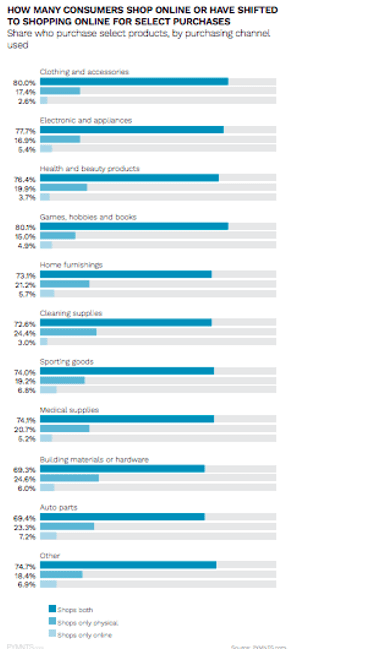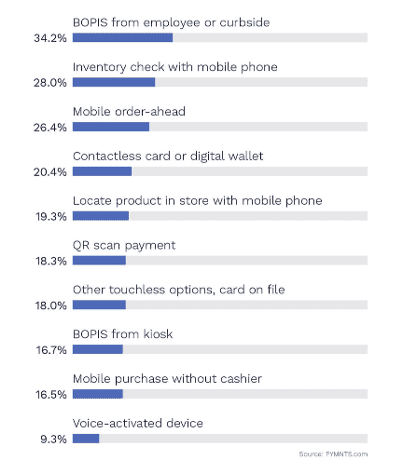
Foot traffic has been slow to recover at America’s retail locations as consumers continue to stay close to home and are eschewing trips that keep them out much longer than 10 minutes, except in a handful of U.S. states. The why of that is a bit more complicated than it appears. According to PYMNTS’ most recently-released set of consumer survey data, some 58 percent of consumers are looking for a sustained decrease in COVID-19 cases, something the U.S. has not quite been able to achieve as of yet even as the vaccine rollout continues.

Also, as consumers have shifted their routines to digital and uncovered new layers of convenience that can enhance their commerce journeys, their preferences have been reprogrammed toward digital transactions and interactions.
Which is not to say that the store is on its way to being an artifact of yesteryear. Much of consumer hesitancy at present still seems to be issuing from the pandemic directly, with worries over contracting the virus or infecting someone else still leading concerns. But, as PYMNTS most recent data demonstrates, even when consumers look beyond the pandemic period, they still envision themselves maintaining the digital habits they’ve spent a year developing.
Over a third of consumers plan to carry on with their remote working routines, while a little over a quarter intend to maintain their digitally-shifting grocery shopping habits.
Separate PYMNTS research demonstrates that digital tools and options have become such a popular expectation of consumers across the board that it is beginning to be a driver in determining where consumers will and will not spend their money. Some 60 percent of consumers won’t shop in stores that fail to offer touchless or contactless experiences.
PYMNTS survey data also indicates that over a third leverage shop online and pickup curbside functionality more often post-pandemic, while 28 percent use mobile more often to pay or check shop inventory before beginning to browse.
 Moreover, the research shows, there tends to be a bit of a perception gap between merchants and their shoppers in terms of delivering on the consumer’s enhanced explanation for a digitally sophisticated experience. The availability of free shipping across various merchants provides an excellent example. Consumers value it extremely highly — 56.1 percent of consumers view free shipping for digital orders as an important feature. Merchants however, only cited free shipping about a third of the time when asked about what their customers valued. The story is similar for data protection: 43.6 percent of consumers view this as important — close to twice the share of merchants who believe their customers have this view.
Moreover, the research shows, there tends to be a bit of a perception gap between merchants and their shoppers in terms of delivering on the consumer’s enhanced explanation for a digitally sophisticated experience. The availability of free shipping across various merchants provides an excellent example. Consumers value it extremely highly — 56.1 percent of consumers view free shipping for digital orders as an important feature. Merchants however, only cited free shipping about a third of the time when asked about what their customers valued. The story is similar for data protection: 43.6 percent of consumers view this as important — close to twice the share of merchants who believe their customers have this view.
And consumers, now armed with digital options they like, are less apt to endure physical experiences that they don’t. It isn’t that they are scared to return to the store — PYMNTS data indicates they are getting progressively less frightened by COVID-19 as time goes by. Nor is it that the store is simply about to become a cast-off part of retail’s history. According to PYMNTS data, physical shopping options remain integral to consumer satisfaction — as top-performing merchants do not just sell online, but across channels. To achieve the highest possible consumer satisfaction marks, retailers still need to offer up a physical experience — but it has to be one that offers more of the fluidity and convenience found in digital channels.
Because even as they get less worried about the virus as they shop, they will remain wary of having a friction-filled experience that takes longer than they want or makes them work harder than they should have to. Which means foot traffic may just remain down, even as caseloads finally begin to really fall, as merchants of all descriptions are figuring out how to design a digitally enhanced experience that will make it worth it for their customer to actually show up.